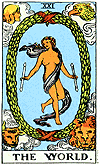I first became aware of Field Dragons from reading about “fire-lizards” in Anne McCaffrey’s books about Pern. They enjoyed being around humans and were rather noisy. After reading about “guardian dragons” in D.J. Conway’s books, I realized that McCaffrey’s “fire-lizards” were Conway’s dragons. And They were the same dragons who liked to play hide-n-seek among the wildflowers.
As I wrote in my blog post about dragon families, I encountered the Dragons of the Fields while on my wildflower walks. (These dragons can also be found frolicking in gardens and orchards.) Sometimes, an odd butterfly will suddenly flit by you. At other times, you glimpse something colorful out of your eye. And on waning summer afternoons, you may hear singing in the waving grass. These are the Dragons of the Fields at play.
Field Dragons are usually brightly colored like the flowers They play in. The ones who are colored golden brown enjoy bouncing on squirrel tail grass. Dancing in the sunlight, Field Dragons like to sing along with the cicadas. They enjoy having a good time.
Because Field Dragons are friendly to humans, They will adopt a kind family. Field Dragons do enjoy gamboling about with children and pets. However if any family member acts uncivilly towards anyone, these dragons will leave. Field Dragons only stay where everyone is welcomed and appreciated.
To entice Field Dragons to adopt your family, make your home and garden, a welcoming place. Since I do not have a garden, I put out pretty stones for Them to play with on my window sills. (Field Dragons especially like moss agate) Also, you can place pictures and little statues of dragons around your house. But remember the family needs to be considerate of each other for these dragons to come.
People who have gardens in North America could plant daises, tulips or squirrel tail grass. For other areas, these Dragons like brightly colored flowers that wave in the breeze. Fruit trees and berry bushes entice Field Dragons to come and feast on the fruit. If you leave out food for the birds, they will tell the Dragons to come by for a visit.
As with all Dragons, Field Dragons expect courtesy from humans. Do not speak or stare at Them. Let the Field Dragons decide how They wish to interact with you. The ones who I meet on my walks simply like to play hide n’ seek.
The Dragons of the Fields are the Guardians of the Dancing Light. Their wisdom is to delight in small things and live in wonder. These Dragons encourage people to embrace the rainbow and know joy.

































